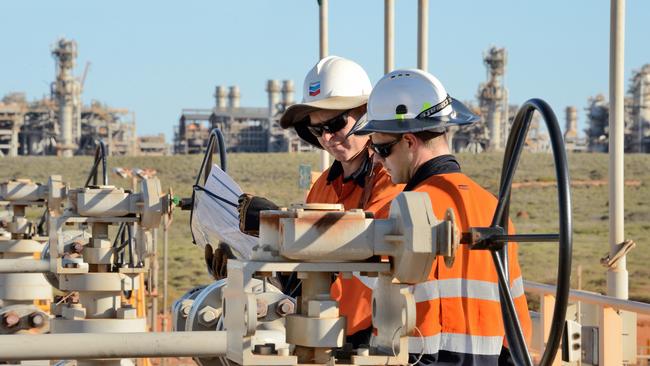Chevron’s carbon capture and storage project finally on
Chevron’s controversial $2.5bn initiative to store carbon dioxide deep beneath WA’s Barrow Island has finally started operation.

Chevron’s controversial $2.5 billion initiative to store carbon dioxide deep beneath Western Australia’s Barrow Island has finally started operation.
The carbon dioxide injection project, the largest of its kind in the world, was originally scheduled to start in March 2017 but has been beset by a series of persistent technical issues.
The US energy giant confirmed yesterday that the project, which will cut the carbon emissions out of Chevron’s $US54bn ($79.74bn) Gorgon LNG project by around 40 per cent, had started injecting carbon dioxide into rocks more than 2km beneath Barrow Island.
Chevron Australia managing director Al Williams said the company would steadily ramp up reinjection over the coming months.
“This achievement is the result of strong collaboration across industry and governments and supports our objective of providing affordable, reliable and ever-cleaner energy essential to our modern lives,” Mr Williams said.
The company expects to inject around 100 million tonnes of carbon dioxide back underground over the life of the project, which Chevron says will help make Gorgon the least greenhouse gas intensive LNG plant in Australia.
The delayed start-up to the injection project has turned Chevron into one of the nation’s biggest carbon dioxide emitters. According to the Clean Energy Regulator, Chevron was responsible for just over 12 million tonnes of carbon dioxide emissions in 2018, making it the sixth-biggest emitter in the country.
While the project was supposed to start operating when gas from the Gorgon field started being treated through the LNG plant in early 2017, concerns about pipeline corrosion and leaking forced a significant overhaul.
Conservation Council of Western Australia director Piers Verstegen yesterday called on Chevron to offset the carbon dioxide that had been emitted as a result of those delays.
“It’s good that they’ve finally got the geosequestration plant operating, but it’s yet to be seen whether it’s actually going to work in the long term,” he told The Australian. “In any case, they should be providing alternative offsets for the massive amount of carbon pollution that has resulted from its failure to date.”
The project should reduce Gorgon’s emissions by 3.4-4 million tonnes a year, the equivalent of taking 680,000 cars off the road. The federal government contributed $60 million to the project under the Low Emissions Technology Development Fund. Federal Resources Minister Matt Canavan said the project was a great example of technology being used to support good environmental outcomes. “Once fully operational, the Gorgon CO2 injection project will make a big contribution to the government’s emission reduction goals,” he said.

